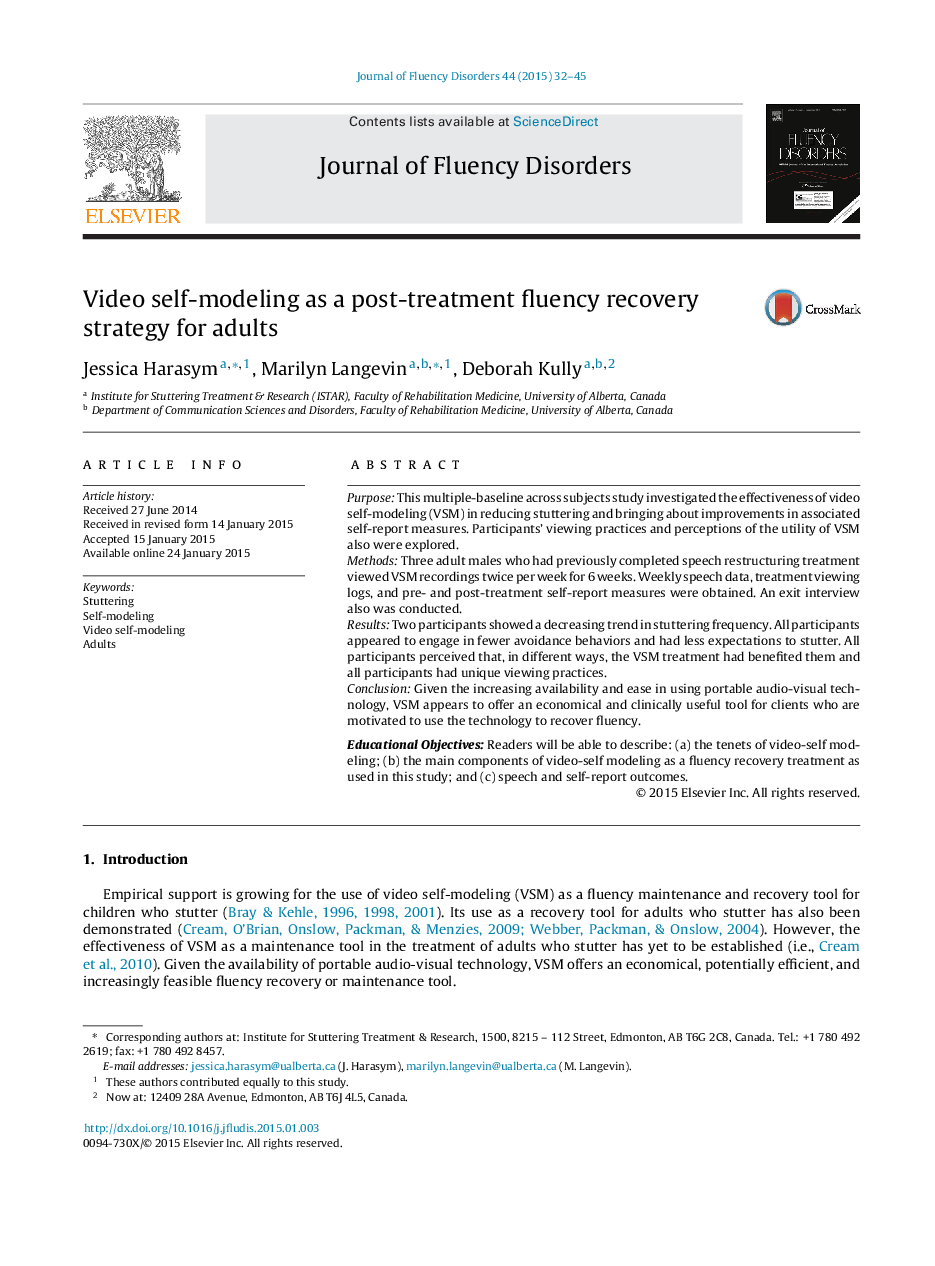| کد مقاله | کد نشریه | سال انتشار | مقاله انگلیسی | نسخه تمام متن |
|---|---|---|---|---|
| 911335 | 1473146 | 2015 | 14 صفحه PDF | دانلود رایگان |
• Two of 3 participants showed reductions in stuttering frequency.
• All participants showed reductions in avoidance behaviours and expectancy to stutter.
• Results suggest that VSM may be a viable fluency recovery intervention.
PurposeThis multiple-baseline across subjects study investigated the effectiveness of video self-modeling (VSM) in reducing stuttering and bringing about improvements in associated self-report measures. Participants’ viewing practices and perceptions of the utility of VSM also were explored.MethodsThree adult males who had previously completed speech restructuring treatment viewed VSM recordings twice per week for 6 weeks. Weekly speech data, treatment viewing logs, and pre- and post-treatment self-report measures were obtained. An exit interview also was conducted.ResultsTwo participants showed a decreasing trend in stuttering frequency. All participants appeared to engage in fewer avoidance behaviors and had less expectations to stutter. All participants perceived that, in different ways, the VSM treatment had benefited them and all participants had unique viewing practices.ConclusionGiven the increasing availability and ease in using portable audio-visual technology, VSM appears to offer an economical and clinically useful tool for clients who are motivated to use the technology to recover fluency.Educational Objectives: Readers will be able to describe: (a) the tenets of video-self modeling; (b) the main components of video-self modeling as a fluency recovery treatment as used in this study; and (c) speech and self-report outcomes.
Journal: Journal of Fluency Disorders - Volume 44, June 2015, Pages 32–45
